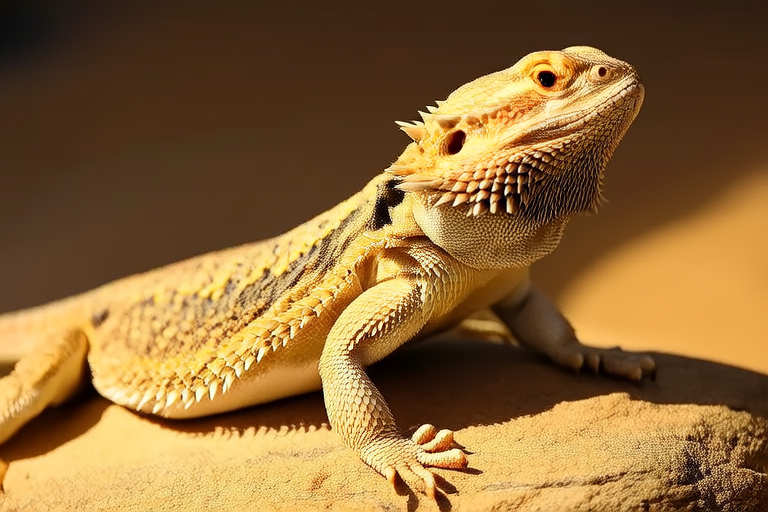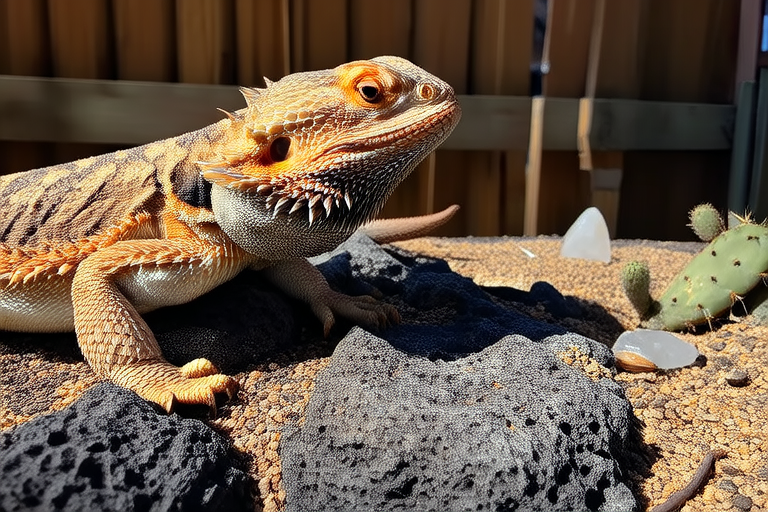
How to Spot the Perfect Bearded Dragon Companion for You
Welcome to the fascinating world of bearded dragons! These charismatic reptiles have become increasingly popular pets due to their docile nature and ease of care. However, finding the perfect bearded dragon companion involves more than just visiting a local pet store. This guide will help you understand bearded dragon behavior, identify essential characteristics of a healthy dragon, and offer advice on selecting the right age, size, and temperament. We’ll also cover where to source your new friend from and how to ensure compatibility with your lifestyle.
Understanding Bearded Dragon Behavior
Bearded dragons display a range of behaviors that can tell you a lot about their mood and needs. They are generally calm and gentle, but they can also exhibit signs of stress or discomfort if not handled properly. For instance, puffing up their beard or flattening their body against the ground might indicate fear or submission. On the other hand, basking under a heat lamp usually means they’re feeling relaxed and comfortable.
One of the most endearing traits of bearded dragons is their ability to communicate through head bobbing and arm waving. Head bobbing typically signifies dominance, while arm waving is often used as a greeting or a way to signal submission. Understanding these behaviors will help you bond with your new pet and provide them with the care they need.
Essential Characteristics to Look for in a Healthy Bearded Dragon
When searching for your perfect bearded dragon companion, it’s crucial to know what signs indicate good health. A healthy bearded dragon should have clear eyes without any discharge, smooth skin free from cuts or abrasions, and strong limbs. Their tail should be straight and not swollen at the base, which could indicate internal parasites.
Eating habits are another important indicator of health. Bearded dragons should eat regularly and show interest in food. If your potential companion shows no appetite or has difficulty eating, this may be a sign of underlying issues that require veterinary attention. Additionally, check their enclosure for cleanliness and appropriate temperature gradients; a well-maintained habitat contributes significantly to the overall well-being of your pet.
Tips on Choosing the Right Age and Size
The age and size of your prospective bearded dragon play significant roles in determining whether they’ll fit into your lifestyle. Younger dragons tend to be more energetic and require more frequent feeding schedules compared to adults who can go longer between meals. Smaller dragons also grow faster, so you might want to consider adopting one that is closer to adulthood if you prefer less maintenance.
For first-time owners, it’s generally recommended to start with a juvenile rather than a hatchling. Juveniles are easier to handle and train, making them ideal candidates for those new to reptile ownership. Experienced reptile keepers might enjoy the challenge of raising a hatchling from scratch but should be prepared for additional responsibilities like daily feedings and monitoring growth rates closely.
The Importance of Temperament
A gentle demeanor makes handling easier and ensures a positive relationship between owner and pet. When evaluating potential companions, observe how they react when approached. Do they retreat into their shell? Or do they remain calm and allow gentle handling? Ideally, you’re looking for a dragon that exhibits curiosity rather than fearfulness.
Temperament can vary widely among individuals within the same species, so take time to interact with each candidate before making a decision. Patience is key here; some dragons may take longer to warm up to human interaction than others. Remember that consistent, gentle handling over time will help build trust and strengthen your bond.
Advice on Sourcing from Reputable Breeders or Shelters
Where you obtain your bearded dragon matters greatly. Purchasing from reputable breeders ensures better genetic quality and reduces the risk of diseases. Reputable breeders prioritize animal welfare above profits and maintain clean facilities with proper husbandry practices.
If you’re considering adopting from a shelter, remember that many shelters house rescued reptiles who have been mistreated or abandoned. These animals often come with unique challenges but can make wonderful companions once rehabilitated. Regardless of where you choose to get your pet, always ask questions about care history, diet preferences, and any known medical conditions.
Ensuring Compatibility with Your Lifestyle
Before bringing home a bearded dragon, assess whether you have enough space and resources dedicated solely to their wellbeing. Bearded dragons need spacious enclosures equipped with UVB lighting, heat sources, hides, and climbing structures. The setup costs alone can run into hundreds of dollars depending on quality materials used.
Consider too how much time you’re willing to dedicate towards caring for your new pet. Regular cleaning, feeding schedules, and health checks are all part of responsible ownership. Are there children in the household? If so, teach them about safe interactions early on since young kids might accidentally harm delicate creatures out of curiosity.
Responsibilities of Owning a Bearded Dragon
Owning any pet comes with certain obligations, and bearded dragons are no exception. As mentioned earlier, maintaining optimal living conditions is paramount. This includes providing adequate heating (between 88°F and 95°F during the day), ensuring humidity levels remain stable (about 30%-40%), and offering varied diets consisting mainly of insects supplemented by leafy greens.
Regular vet visits are also necessary even if your dragon appears healthy. Annual checkups allow veterinarians to catch potential problems early before they become serious issues. Furthermore, spaying/neutering helps prevent certain cancers and behavioral problems associated with sexual maturity.
Practical Insights for First-Time Owners and Experienced Reptile Keepers Alike
First-time owners might find themselves overwhelmed by the amount of information available online regarding bearded dragon care. Start small by focusing on basic needs like feeding and housing requirements before moving onto advanced topics such as breeding or specialized dietary supplements.
Experienced reptile keepers could benefit from exploring lesser-known aspects of bearded dragon biology. Perhaps delve deeper into understanding their natural habitats or experimenting with different enrichment activities designed to stimulate mental and physical exercise. Sharing knowledge within the community fosters mutual learning opportunities and strengthens bonds among fellow enthusiasts.
Conclusion
Selecting the perfect bearded dragon companion requires careful consideration of several factors including behavior, health indicators, age/size preferences, temperament evaluation, sourcing methods, and lifestyle compatibility. By taking the time to thoroughly research and prepare yourself both mentally and physically for this commitment, you set yourself up for success in creating a loving relationship with one of nature’s most captivating creatures.





